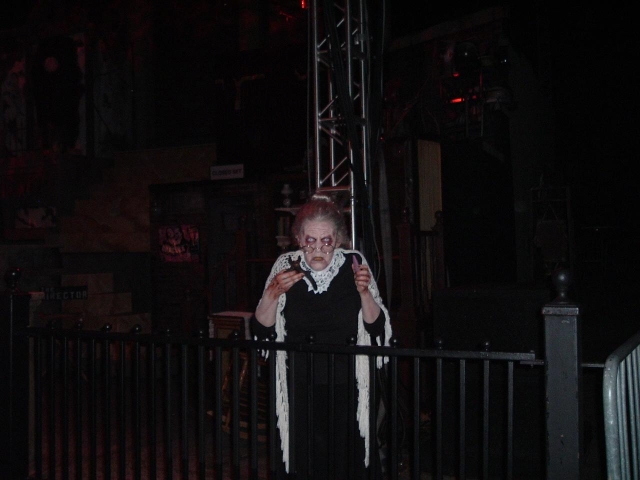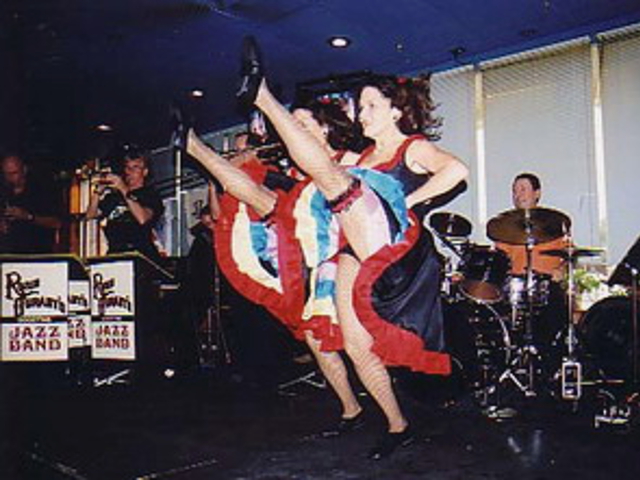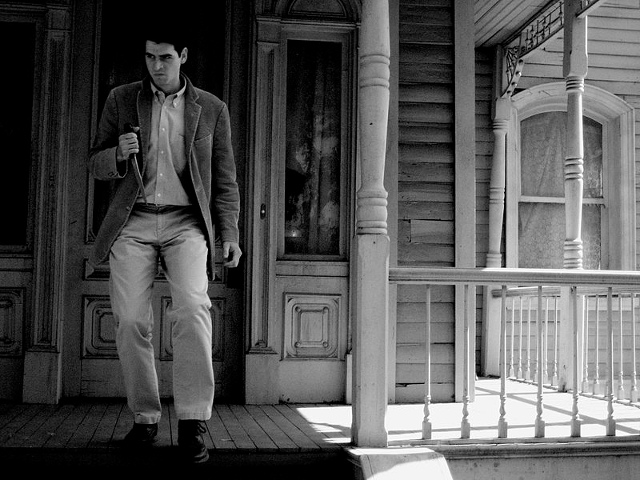4. High-End Makeup

Alan Ostrander and his team really knew their products. They designed many of the prosthetics themselves, ushering in a new age of special effects makeup for the haunt industry. But they also knew that even in the most basic pancake makeup, quality makes a huge difference. They selected high-end formulations that were easy to apply and blend, held up to a long night of sweating in the theatrical lights, and were reasonably easy for the actors to remove each night. The attention that Terror paid to the makeup and special effects showed the world what could be done with the proper tools in the hands of professionals.
5. Location, Location, Location

Terror on Church Street could not have asked for a more perfect location. Located inside Downtown Orlando’s historic Woolworth Building, Terror on Church Street was allegedly home to at least one real ghost. Dubbed the Yellow Man, the apparition quickly became part of the attraction’s lore. Actors reported other paranormal activity as well, from contact via a Ouija board with a spirit that claimed to know the actor from the Attic set, to the indentation of an unseen person lying on the Exorcist bed. Whether the ghost sightings were real, a marketing ploy, or the figment of highly creative people’s overactive imaginations, there was no denying that the sense of history added a layer of atmosphere that would be impossible to recreate in a newly constructed building.
Terror also benefited from its positioning at the corner of Church Street and Orange Avenue. When Terror opened, Walt Disney World’s Pleasure Island was only 2 years old. Universal Orlando’s CityWalk was still 8 years in the future. Orlando’s Church Street Station had been the high-energy nightspot for locals and tourists alike since the early 1970s. It was at the apex of its popularity, drawing more than a million visitors per year. Church Street Station was a collection of nightclubs, shops, and restaurants, and Terror on Church Street was at the end of its block. This created a seamless transition for those wanting to add a little fright to their evening. This successful marriage represented a radical departure from reigning haunt traditions, which generally placed haunted houses in parking lots and other out-of-the-way locations.
6. Marketing and Public Relations

Before Terror on Church Street, haunt industry marketing was practically nonexistent. A local haunted house might print up a few small flyers to place on car windshields, or take out a brief radio ad, but without today’s social media, advertising was expensive and hardly seemed worth it to haunt owners.
Terror on Church Street came in with a splash worthy of a blockbuster movie premiere. Esteemed horror icon Anthony Perkins, best known for his portrayal of serial killer Norman Bates in the “Psycho” films, was signed as celebrity spokesman. It was a natural partnership, as Perkins had attended nearby Rollins College and had recently filmed “Psycho IV: The Beginning” at Universal Orlando.
With Perkins on board, the marketing team went to work, creating a multi-pronged approach that ultimately drew visitors from around the world. The media helped, running story after story about this brand-new theatrical playground where guests could celebrate Halloween 364 days per year (closed on Christmas Day). Terror was an early adopter of the Internet, building a small website with basic information, photos, and a catalog of available merchandise. Selling logo merchandise was not frequently done by haunts in those days, and online catalogs were relatively rare. But Terror recognized and harnessed the power of the Internet, as well as the ability of merchandise to serve a valuable promotional role.
Today, of course, none of this sounds extraordinary. Big-budget haunts in great locations with movie-quality sets, logo merchandise, and heavy promotion are the norm. But without Terror on Church Street, the modern haunt industry might never have come to be.
Terror closed suddenly in May 1999, despite having signed a 5-year lease the previous year. The name and some of the props and sets moved to a new location in the Church Street Exchange, but the writing was on the wall. Pleasure Island and CityWalk had taken over the tourist trade, and Downtown Orlando was in serious trouble. Terror 2 soon closed quietly, with little fanfare. Yet the legend endures, with numerous haunts around the country taking some variation of the Terror name. Most recently, a small group with connections to Terror on Church Street opened Legends, a permanent haunted house in Kissimmee’s Old Town. Only time will tell whether this highly theatrical haunt will become a true successor to the magic that was Terror on Church Street.
Add new comment